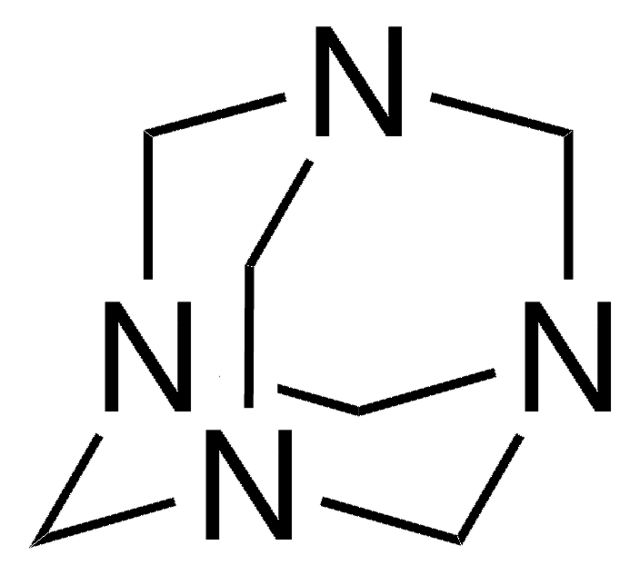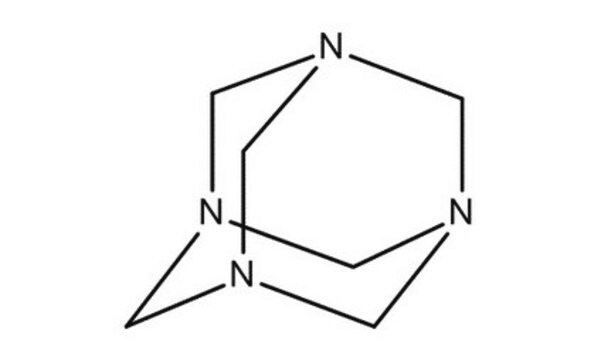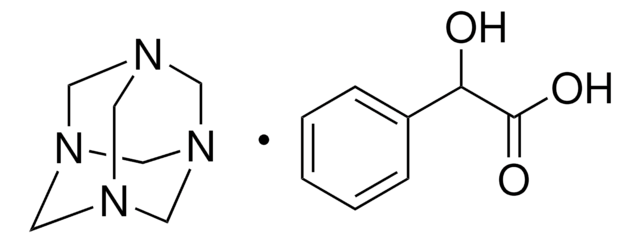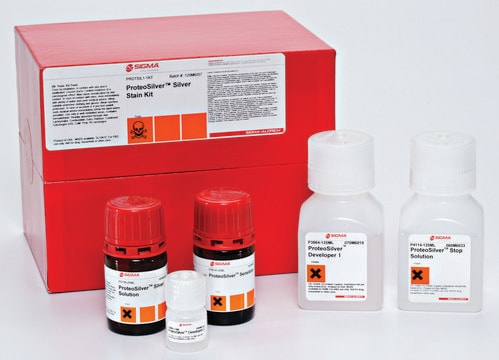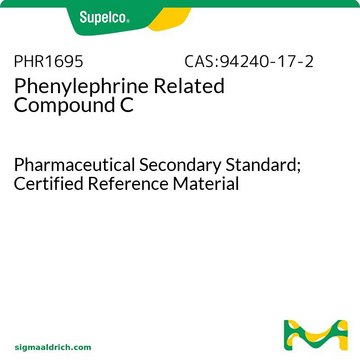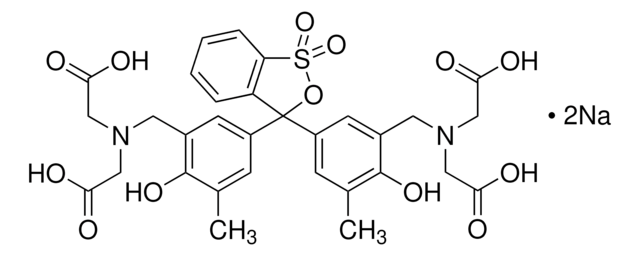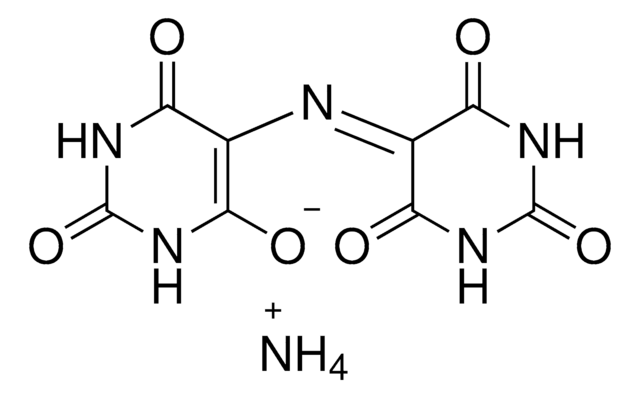Kluczowe dokumenty
Y0000754
Methenamine
European Pharmacopoeia (EP) Reference Standard
Synonim(y):
Hexamethylenetetramine, 1,3,5,7-Tetraazatricyclo[3.3.1.13,7]decane, Hexamine, Methenamine, Urotropine
About This Item
Polecane produkty
klasa czystości
pharmaceutical primary standard
ciśnienie pary
<0.01 mmHg ( 20 °C)
rodzina API
methenamine
temp. samozapłonu
770 °F
producent / nazwa handlowa
EDQM
mp
280 °C (subl.) (lit.)
Zastosowanie
pharmaceutical (small molecule)
Format
neat
temp. przechowywania
2-8°C
ciąg SMILES
C1N2CN3CN1CN(C2)C3
InChI
1S/C6H12N4/c1-7-2-9-4-8(1)5-10(3-7)6-9/h1-6H2
Klucz InChI
VKYKSIONXSXAKP-UHFFFAOYSA-N
Szukasz podobnych produktów? Odwiedź Przewodnik dotyczący porównywania produktów
Opis ogólny
Zastosowanie
Opakowanie
Inne uwagi
Hasło ostrzegawcze
Warning
Zwroty wskazujące rodzaj zagrożenia
Zwroty wskazujące środki ostrożności
Klasyfikacja zagrożeń
Flam. Sol. 2 - Skin Sens. 1B
Kod klasy składowania
4.1B - Flammable solid hazardous materials
Klasa zagrożenia wodnego (WGK)
WGK 1
Temperatura zapłonu (°F)
482.0 °F - closed cup
Temperatura zapłonu (°C)
250 °C - closed cup
Wykazy regulacyjne
Wykazy regulacyjne dotyczą głównie produktów chemicznych. Można w nich podawać ograniczoną liczbę informacji na temat produktów niechemicznych. Brak wpisu oznacza, że żaden ze składników nie znajduje się w wykazie. Użytkownik odpowiada za zagwarantowanie bezpiecznego i zgodnego z prawem stosowania produktu.
EU REACH Annex XVII (Restriction List)
Wybierz jedną z najnowszych wersji:
Certyfikaty analizy (CoA)
It looks like we've run into a problem, but you can still download Certificates of Analysis from our Dokumenty section.
Proszę o kontakt, jeśli potrzebna jest pomoc Obsługa Klienta
Masz już ten produkt?
Dokumenty związane z niedawno zakupionymi produktami zostały zamieszczone w Bibliotece dokumentów.
Klienci oglądali również te produkty
Nasz zespół naukowców ma doświadczenie we wszystkich obszarach badań, w tym w naukach przyrodniczych, materiałoznawstwie, syntezie chemicznej, chromatografii, analityce i wielu innych dziedzinach.
Skontaktuj się z zespołem ds. pomocy technicznej